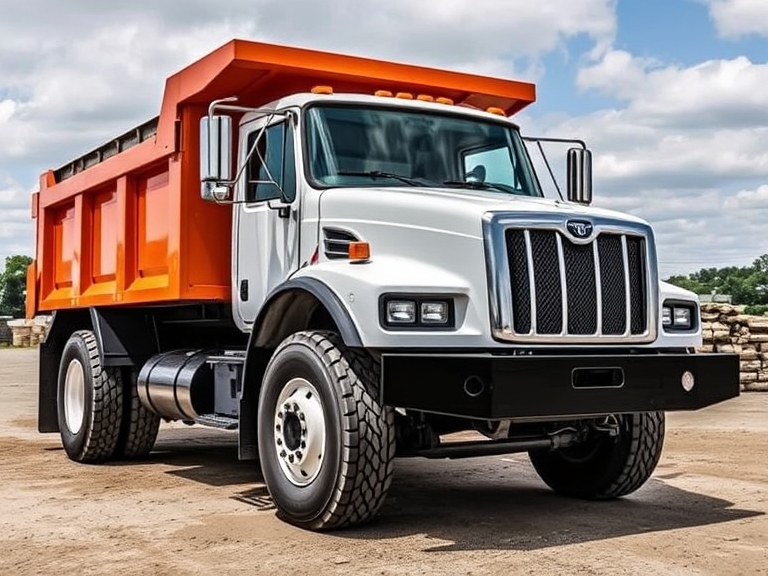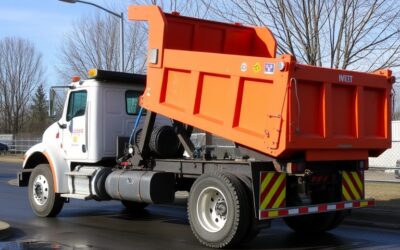Operating a dump truck can be challenging—especially when it comes to preventing tip-overs. WINK Anti-Tip technology offers a reliable solution, giving drivers real-time alerts and automatic adjustments for safer operations. Safety is always a priority, and implementing advanced technology like the WINK Anti-Tip device can make a significant difference. Designed specifically for frameless dump trucks, roll-off dump trucks, and frame-type dump trucks, the WINK Anti-Tip device provides crucial real-time alerts, allowing drivers to take swift action when necessary.
Before you can benefit from this innovative technology, it’s essential to understand how to properly install and use the WINK Anti-Tip device. Proper preparation and installation ensure that the system functions correctly, providing the safety and stability your operations require. From the initial setup to ongoing calibration and best practices while driving, each step is crucial.
In this guide, I will walk you through the entire process of using WINK Anti-Tip technology, starting with preparing your dump truck for installation. You’ll learn how to install the device correctly, calibrate it for optimal performance, and follow best practices for driving with the system in place. This comprehensive approach ensures that you can maximize the benefits of the WINK Anti-Tip device, keeping both your truck and your team safe on the road.
Preparing Your Dump Truck for WINK Anti-Tip Installation
Before installing WINK Anti-Tip technology, prepare your truck to ensure a smooth installation. Start by conducting a thorough inspection of the truck. Ensure that all components are in good condition and there are no existing issues that could interfere with the installation. Check for any signs of wear or damage, particularly on the areas where the device will be mounted. Fix any problems first to ensure a smooth installation process.
Next, gather all the necessary tools and materials required for the installation. Having everything ready beforehand saves time and minimizes disruptions. Make sure you have the WINK Anti-Tip device kit, which should include the main unit, sensors, mounting brackets, bolts, and electrical wiring. You will also need basic tools like wrenches, screwdrivers, and possibly a drill. Reviewing the installation manual ahead of time can give you a clear idea of what to expect and help identify any additional tools or preparation needed.
Step-by-Step Installation Process for WINK Anti-Tip
Follow these steps carefully to install WINK Anti-Tip correctly and ensure optimal safety: Begin by mounting the main unit to the truck frame. Use the provided brackets and bolts to secure it firmly in place. Make sure the unit is positioned correctly as outlined in the installation guide to prevent any interference with other truck components.
Next, attach the sensors to the designated locations. These sensors will monitor the truck’s tilt and balance, so it’s essential they are placed correctly. Clean the mounting surfaces and ensure they are free of debris before attaching the sensors. Use the provided hardware to secure them, and double-check that they are firmly in place.
After mounting the sensors, connect the wiring. Carefully route the wires from the sensors to the main unit, making sure they are protected from potential damage caused by moving parts or road debris. Secure the wires using cable ties or clamps and connect them to the corresponding ports on the main unit. Once all connections are made, power up the device to check that it’s receiving signals from the sensors.
Finally, perform a basic functionality test to ensure the device is working correctly. Tilt the truck slightly and observe if the WINK Anti-Tip unit provides the expected alerts. If everything is functioning as it should, the installation is complete, and you can move on to the calibration and testing phase.
How to Calibrate and Test Your WINK Anti-Tip System
Calibration is key to making sure WINK Anti-Tip works as it should. Here’s how to test it for real-world safety: Start by parking your truck on a level surface. This provides an accurate baseline for calibration. Follow the manufacturer’s guidelines to initiate the calibration process. This typically involves adjusting the sensors to ensure they are accurately detecting the truck’s tilt and balance.
Once calibrated, perform a series of tests to validate the system’s accuracy. Begin with small, controlled tilts to check if the sensors detect the change and issue alerts. Gradually increase the angles of tilt to different degrees. Ensure the system responds appropriately by either sounding an alert or triggering the automatic lowering feature if the tilt becomes too steep. These tests help in confirming that the WINK Anti-Tip system is ready to provide real-time stability monitoring and safety alerts during actual operations.
Best Practices for Operating with WINK Anti-Tip Technology
To get the most from your WINK Anti-Tip device, follow these essential safety practices while operating your dump truck: Always start by performing a pre-trip inspection to ensure the system is functioning correctly. Check for any sensor obstructions or loose connections. Make it a habit to inspect the device regularly to catch any potential issues early.
While driving, stay alert to the system’s alerts and warnings. If the system signals an imbalance, promptly take corrective actions such as adjusting your speed or redistributing the load. Additionally, maintain a steady and moderate speed, especially when navigating sharp turns or uneven terrain. These practices help in enhancing the stability of the dump truck and ensuring the WINK Anti-Tip device can perform its function effectively.
Conclusion
Keeping dump trucks safe and stable is critical for every job. The WINK Anti-Tip device, with its real-time alerts and automatic adjustments, can make all the difference in preventing accidents. From understanding the importance of advanced sensor technology to the necessity of automated safety features, ensuring that your WINK Anti-Tip system is correctly calibrated and tested is essential. By following best practices, you can significantly reduce the risks associated with dump truck operations, making your work environment safer and more efficient.
If you are looking to enhance dump truck safety, the WINK Anti-Tip device is an essential tool. To learn more about how this advanced technology can benefit your operations, contact us today. Equip your trucks with the leading technology in dump truck safety today!





